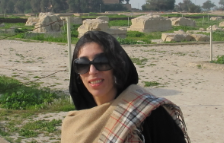In the Pahlavi Bundahishn, Ahriman (the supreme deity of evil) has sacrificed the primeval bull beside primordial man Gayomard. Most of the mythical evidence of Indo-European culture illustrates the image or Imagination of the creation of a human or animal sacrifice for the creation of the whole world of its parts and organs. An example of these sacrifices is Gayomard and the primeval bull in Bundahishn. In Zoroastrianism, there are more mythical narratives of human beings and less about other phenomena, including animals. However, in the narrative of the creation myth in Iranian culture, besides the creation of parts of the body of the gods or primitive human beings, the archetype of the primeval bull is present. The idea of adaptation of the Macro and Micro worlds in the Iranian narrative refers the distinction between the creation of animals and plants from the body of bull and the manner in which the first pair of creation, Mashya and Mashyana of the body of Gayomard. This is not evident in other narratives of Indo-European culture. This study aims to explain the image of plant creation of organs in primeval bull conjunction with other examples of the creation of the deity or androgynous goddesses and to answer the question of whether the two patterns are essentially interrelated. Therefore, after citing evidence from both instances, it is attempted to analyze this relationship in the above narratives and to show that the role of cattle in the myths of Indo-European creation with the role of goddess in the creation of the world, man, earth, and plant can be co-existent. After bull's death, his body created the plants and animals. This article makes an attempt to explain origin of the animals and vegetable species from the bull-sacrifice based on the sources of myths and archaeological evidences. The bull is the symbol of the fertility goddess, the Earth Goddess, the androgynous being and the origin of life. Therefore, the plants are created from his body.
Keywords: mythology, Zoroastrianism, bull, plants, Bundahishn
DOI: 10.22250/2072-8662.2019.4.5-12
About the author
 |
Leila Asgari - PhD student, The Institute of Linguistics of the Russian Academy of Sciences; build 1, 1 Bolshoy Kislovsky Ln, Moscow, Russia, 125009; This email address is being protected from spambots. You need JavaScript enabled to view it. |






